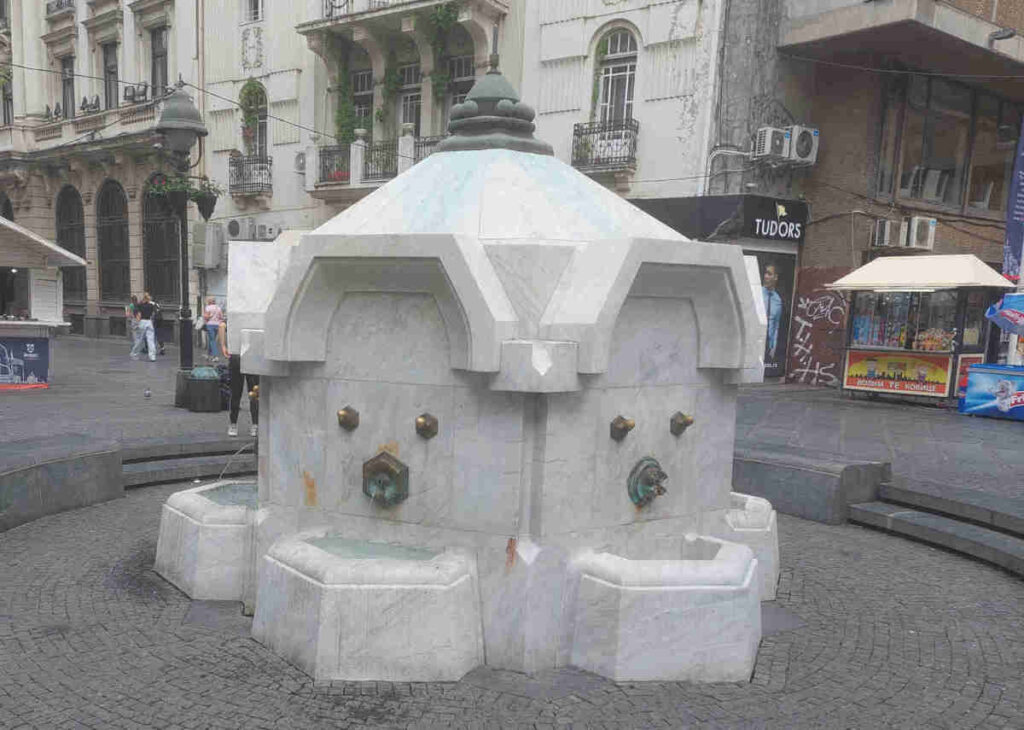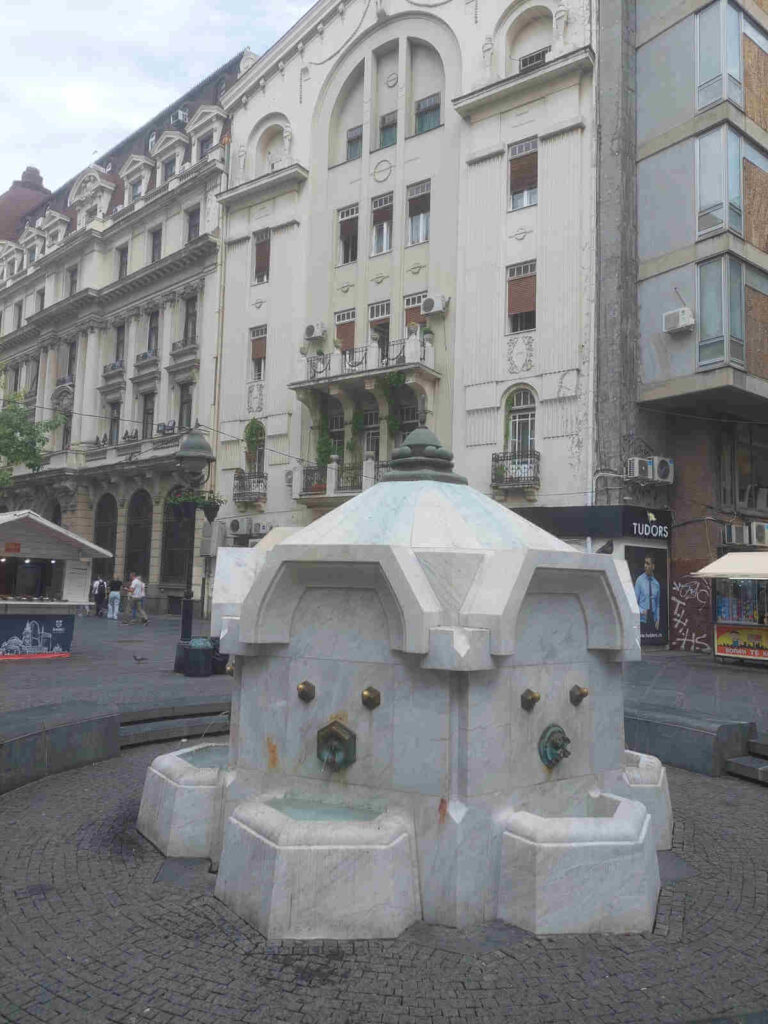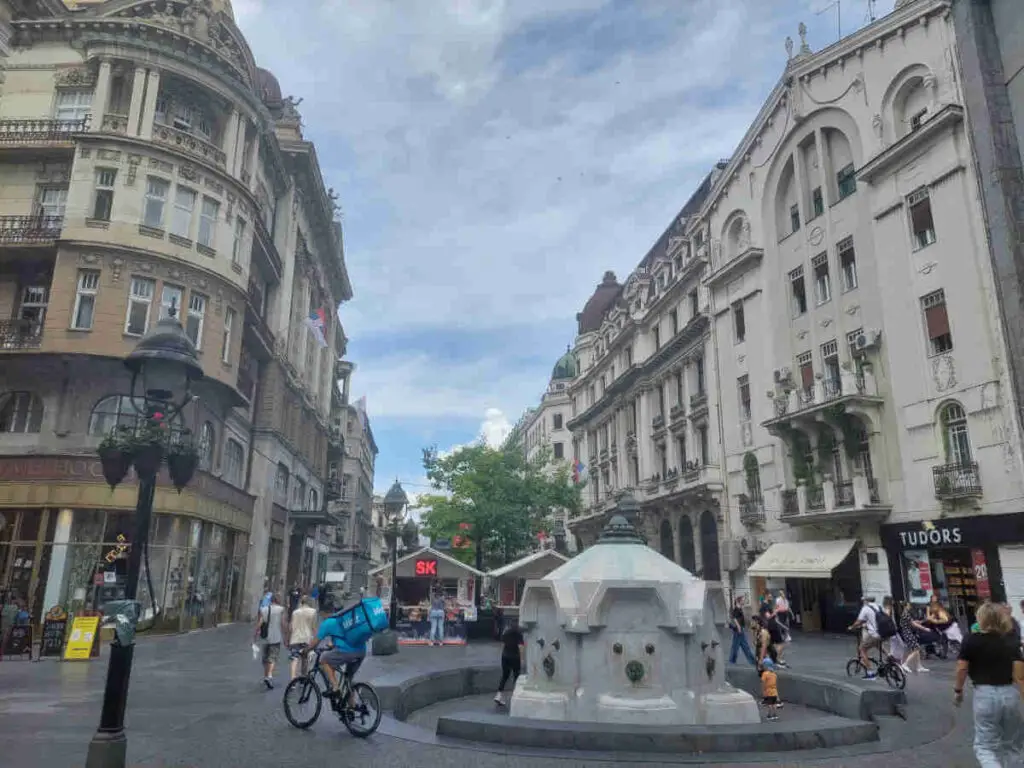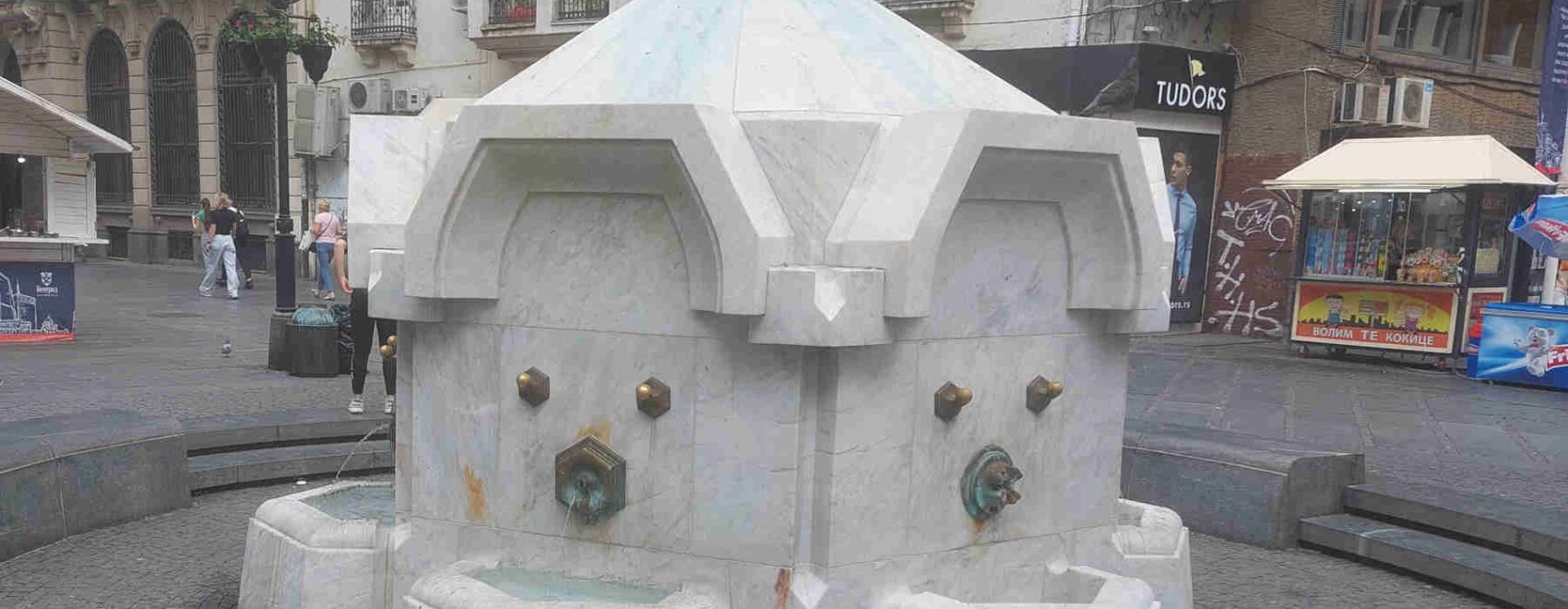Delijska česma (Delijska Fountain) stands on Knez Mihailova Street as one of Belgrade’s most visited public fountains, and it carries a unique historical legacy. Over the years, it has been demolished, rebuilt, and relocated multiple times, reflecting Belgrade’s layered and turbulent past. As pedestrians make their way from the Palace Albania to Kalemegdan Park, many pause at this fountain to refresh themselves, share a few words, and take in the charm of this enduring symbol of the city’s history.

Historical Origins: A Fountain with Many Lives
The name “Delijska” originates from the Turkish word for light cavalry, as the fountain served to provide water for their horses. The first fountain was built in 1843 and demolished in 1889, when it was replaced by the second Delijska Fountain. This second fountain was demolished in 1913 during the construction of the Serbian Academy of Sciences and Arts building.
The third fountain bearing this name was erected on Knez Mihailova Street during the 1987 large-scale reconstruction. Urban planners sought to honor its legacy by creating a new version based on the designs of renowned architect Aleksandar Deroko. The goal was to merge the elements of the two earlier fountains, yet the final construction took on a more contemporary and simplified form.
Visiting Delijska Česma Today

The fountain has witnessed many significant events, from the fall of the Ottoman Empire to the establishment of modern-day Serbia. With every demolition and reconstruction, it has adapted and reappeared, much like the city itself. Today, Delijska česma serves as a popular meeting point on Knez Mihailova Street, which is a bustling pedestrian zone lined with shops, cafes, and historic buildings. Although it no longer functions as a primary water source, it continues to attract visitors who stop to admire its design and learn about its fascinating past.

A visit to Delijska česma is an essential part of experiencing Knez Mihailova Street. For locals, it’s a beloved landmark; for visitors, it’s a unique glimpse into Belgrade’s long history. The fountain remains a quiet, historical counterpoint amid the lively surroundings, serving as a reminder of Belgrade’s resilience and the layers of history that shape its present.


Leave a Reply